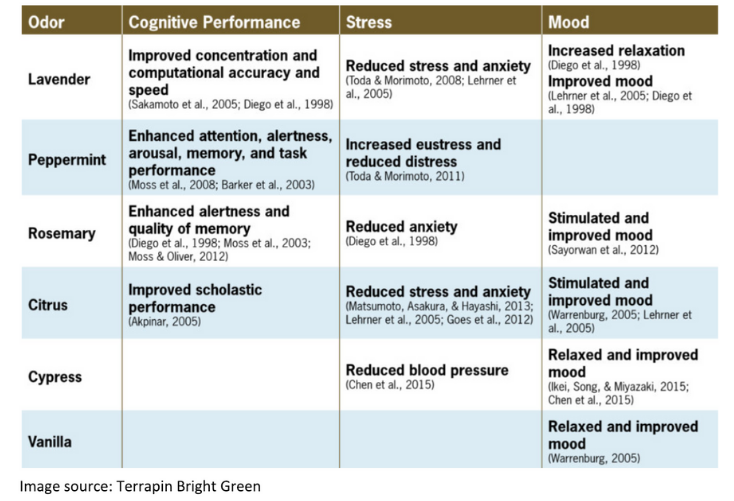- Studies show that incorporating natural elements into the workplace can have multiple positive effects, such as reducing stress and anxiety.
- Biophilic design translates into a better workplace experience, but it’s not just about adding plant life and shrubbery.
- From using wood and natural materials to introducing essential oils, here are five easy ways to embrace biophilia without breaking the bank.
The biophilia hypothesis suggests that humans possess an innate tendency to seek connections with nature and other forms of life. Back in 1973, psychoanalyst Erich Fromm described biophilia as “the passionate love of life and of all that is alive.” Eleven years later, in 1984, Edward O. Wilson proposed that humans have a genetic basis that leads them to focus on and to affiliate with nature and other life-forms.
Since then, various studies have shown that environments devoid of nature and natural elements have a negative impact on health and well-being. On the other hand, access to natural elements or views can have a positive impact on a person’s health.
You might also enjoy reading: “Can Your Workplace Design Help Reduce Stress?”
A study carried out in hospitals found that “95% of people who walk through hospital gardens report a therapeutic benefit from simply being in them.” According to it, “when hospitals provide easy access to nature, patients, employees and family members can all enjoy the benefit it provides, including reduced stress, reduced blood pressure, reduced pain and increased pain tolerance, faster recovery times, and, simply, pleasant escape from stressful situations.”
Incorporating natural elements into the workplace can have the same positive effects; it can improve worker’s health, morale, productivity, energy, and it can help reduce stress and anxiety. Biophilic workplace design will, overall, translate into a better workplace experience.
5 easy ways to embrace biophilia in your workplace
There’s more to biophilic design than meets the eye. In an interview with European CEO, Chris Alldred from K2 Space said that “a common misconception is that biophilic design translates to adding lots of plant life and shrubbery; it is far more complex than that.”
Still, plants can go a long way towards improving wellness in the workplace and they are one of the easiest ways to bring the outdoors into the built environment. Below are five easy ways to embrace biophilia without breaking the bank.
1. Add plants and greenery to the workplace
Plants will not only bring life to your workspace (quite literally), but they can also help improve your workspace acoustics. Plants also improve air quality, which can help improve concentration and decrease mental fatigue. Check out these 7 best low-maintenance plants and also think about using a green wall in your reception area or any of the community areas where a lot of people are exposed to it.
2. Use wood and stone in your furniture and decorations
One easy way to bring the outdoors in is to use natural elements for design purposes. Consider using wood and stone finishes in your furniture and decoration. Keep in mind that nature is not just about views, but also texture.
3. Tune into the sense of smell
One way people connect with nature is through the sense of smell. There’s also been a big push towards multisensory workplace design. Instead of using artificial fragrances, think about using essential oils like lavender, peppermint, rosemary, citrus, cypress, and vanilla. According to studies, “exposure to natural scents has been observed to have psychophysiological effects.” (Suggested reading: Scentimental Associations with Nature: Odor-Associative Learning and Biophilic Design via Terrapin Bright Green)

4. Think about sound
Again, let’s revisit multisensory design. Consider using sounds of water, air, or even fire to bring natural elements into the workplace. If you have an area where you can incorporate a small fountain or waterfall, that’s ideal, but if not, think about using some white noise to help people relax.
5. Colors and patterns
Colors and light spectrums affect a person’s mood. When choosing workplace colors, consider using earthy tones like greens, browns, blues, whites, and gold. You should also think about using natural patterned wallpaper; experts suggest using irregular patterns that resemble nature but advise against geometric patterns, as these are man-made.


 Dr. Gleb Tsipursky – The Office Whisperer
Dr. Gleb Tsipursky – The Office Whisperer Nirit Cohen – WorkFutures
Nirit Cohen – WorkFutures Angela Howard – Culture Expert
Angela Howard – Culture Expert Drew Jones – Design & Innovation
Drew Jones – Design & Innovation Jonathan Price – CRE & Flex Expert
Jonathan Price – CRE & Flex Expert











